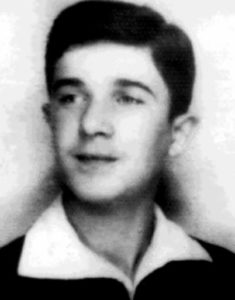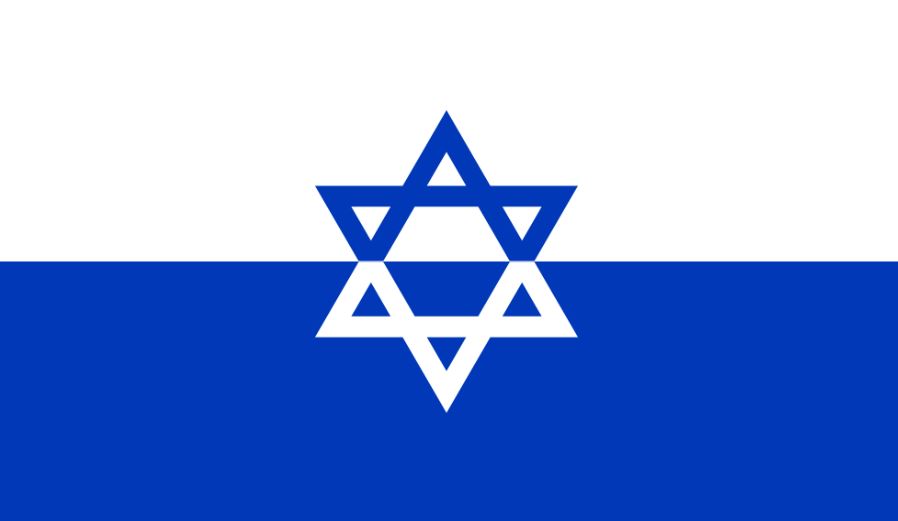Commander of the Warsaw Ghetto Uprising

Mordechai Anielewicz, commander of the Jewish Combat Organization
Mordechai Anielewicz (1919-1943) was born near Warsaw to a traditional Polish-Jewish family. After completing Hebrew school, he joined the Betar Zionist youth movement, and later Hashomer Hatzair Zionist youth movement. Shortly before the outbreak of World War II, Anielewicz participated in a Polish military training camp. When Germany invaded Poland, he joined a group of youths who fled east in the hopes of organizing an armed resistance. However, the Soviets invaded the eastern half of Poland, and Anielewicz was eventually arrested and thrown in jail for helping Jewish refugees flee across Romania to Israel. Released from prison shortly after, Anielewicz returned to Warsaw and began organizing a resistance movement. He started a secret newspaper called Neged HaZerem, “Against the Current”. By the end of 1940, Anielewicz was among 400,000 Jews (a third of Warsaw’s total population) forcibly crammed and imprisoned inside the tiny Warsaw Ghetto. Less than a year later, the Nazis started “evacuating” Jews from the Ghetto and when Anielewicz heard reports of mass murder, he called up his resistance fighters. The group attempted to join the Polish underground resistance, but was rebuffed. They risked their lives trying to smuggle and build up a weapons arsenal inside the Ghetto. By September 1942, three quarters of the Warsaw Ghetto’s Jews were deported, and 265,000 of them murdered. Anielewicz and his team started building bunkers and tunnels, and stockpiling their homemade grenades and Molotov cocktails. Shortly after, they were able to acquire several rifles and mines, and one machine gun from the Polish underground. They staged their first attack in January of 1943, and managed to free a handful of Jews. This convinced the Polish underground that the Jews could fight, and they smuggled more weapons to the group (with help from the Jewish Military Union, made up of former officers in the Polish army) now calling itself the Jewish Combat Organization. The resistance continued to make serious trouble for the Nazis. When word came that the Warsaw Ghetto would soon be liquidated, Anielewicz wrote a letter to all of its residents to join the fight, writing that “We are slaves, and when slaves are no longer profitable, they are killed.” The Nazis began the final deportation on April 19, the morning before Passover. They sent in 821 SS troops, who were met by 750 Jewish fighters under the command of Anielewicz. The Jews inflicted serious damage, and the Nazis retreated. They returned with over 2000 soldiers and heavier weapons. The Jewish resistance had the upper hand for nearly a week – and at one point even raised up their flag – but were eventually overpowered. More than 56,000 Jews were captured. The Nazis continued to search for bunkers and slaughter anyone hiding inside. They reached the command bunk on Mila Street on May 7th, where nearly three hundred Jews, including Anielewicz, were shot to death, died by suffocation from gas grenades, or committed suicide. The surviving fighters continued to resist until May 16. While the vast majority of Jews perished, a handful of survivors known as the “Ghetto Fighters” later settled in Israel and established a kibbutz. The actions of Anielewicz gave Jews a sense of hope and strength. He inspired countless others both in his day, and in the present day, and became a symbol of bravery and self-sacrifice. The Polish Army posthumously awarded Anielewicz the Cross of Valour and the Cross of Grunwald. This year, the eve of Passover is once again on April 19, as it was in 1943 when Anielewicz and his courageous warriors launched the Warsaw Ghetto Uprising.
11 Common Passover Misconceptions
Words of the Week
Regarding the custom of opening the door for Eliyahu on Passover night – don’t think Eliyahu really enters through the physical door of your house. Instead he enters through the doors of your heart and mind.
– Rabbi Menachem Mendel of Kotzk, the Kotzker Rebbe

Flag of the Jewish Combat Organization Flag
